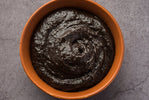
Optimal Timing for Taking Shilajit: Morning, Evening, or Night?
, by Sandesh Prasannakumar, 6 min reading time
New Year Sale Is Live - Shop Now!
New Year Sale Is Live - Shop Now!
New Year Sale Is Live - Shop Now!
New Year Sale Is Live - Shop Now!
New Year Sale Is Live - Shop Now!
New Year Sale Is Live - Shop Now!
New Year Sale Is Live - Shop Now!
New Year Sale Is Live - Shop Now!
New Year Sale Is Live - Shop Now!
New Year Sale Is Live - Shop Now!

, by Sandesh Prasannakumar, 6 min reading time
Shilajit, a natural resin packed with minerals, fulvic acid, and other beneficial compounds, has been used in traditional medicine for centuries. Known for its energy-boosting, anti-aging, and overall wellness properties, Shilajit is a popular supplement for those looking to enhance their health. But the question arises: what is the best time to take Shilajit to reap its full benefits? This guide will help you understand the ideal timing, dosage, and how Shilajit works within your daily routine.
Shilajit is a sticky substance that oozes from rocks in mountainous regions, primarily in the Himalayas. It is rich in minerals, antioxidants, and fulvic acid, making it a potent supplement for boosting overall health. Shilajit is known to:
To maximize these benefits, it’s essential to take Shilajit at the right time.
The timing of Shilajit intake can influence how well it works in your body. Here’s a detailed look at the best times to consume Shilajit:
Taking Shilajit in the morning is ideal for those seeking an energy boost to start their day. Shilajit increases ATP production, the energy currency of your body, helping you feel more alert and active. Consuming it with a glass of warm water or milk on an empty stomach can enhance its absorption.
Benefits of Taking Shilajit in the Morning:
However, it’s crucial not to overconsume Shilajit in the morning, as high doses may cause digestive discomfort.
If you often experience an energy slump during the afternoon, Shilajit can be a great mid-day pick-me-up. It helps maintain consistent energy levels and can be particularly beneficial for those with demanding jobs or active lifestyles.
Benefits of Taking Shilajit in the Afternoon:
For best results, take Shilajit 30 minutes before your lunch or any other mid-day meal.
For athletes or those engaging in physical exercise, consuming Shilajit in the evening can aid in muscle recovery. Shilajit’s anti-inflammatory properties help reduce muscle soreness and speed up recovery, making it an excellent supplement for post-workout routines.
Benefits of Taking Shilajit in the Evening:
Pairing Shilajit with a protein shake or a light meal post-exercise enhances its recovery benefits.
While Shilajit is primarily known for its energy-boosting effects, it also plays a role in improving sleep quality when taken at night. Its adaptogenic properties help regulate stress hormones, promoting relaxation and restful sleep.
Benefits of Taking Shilajit at Night:
If you prefer taking Shilajit at night, ensure it's at least an hour after your dinner to aid in digestion.
For optimal results, it’s important to stick to the recommended dosage of Shilajit. Generally, 300-500 mg of pure Shilajit resin is sufficient for most adults. Beginners should start with a lower dose and gradually increase as their body adapts. Always consult with a healthcare provider before starting Shilajit, especially if you have existing health conditions or are on medication.
This guide should help you understand the best timing for taking Shilajit to match your health and lifestyle needs. Whether you’re looking to boost energy, improve recovery, or simply enhance your overall wellness, Shilajit’s timing can play a crucial role in its effectiveness.
For the best quality Shilajit and other health supplements, visit Genetic Nutrition!